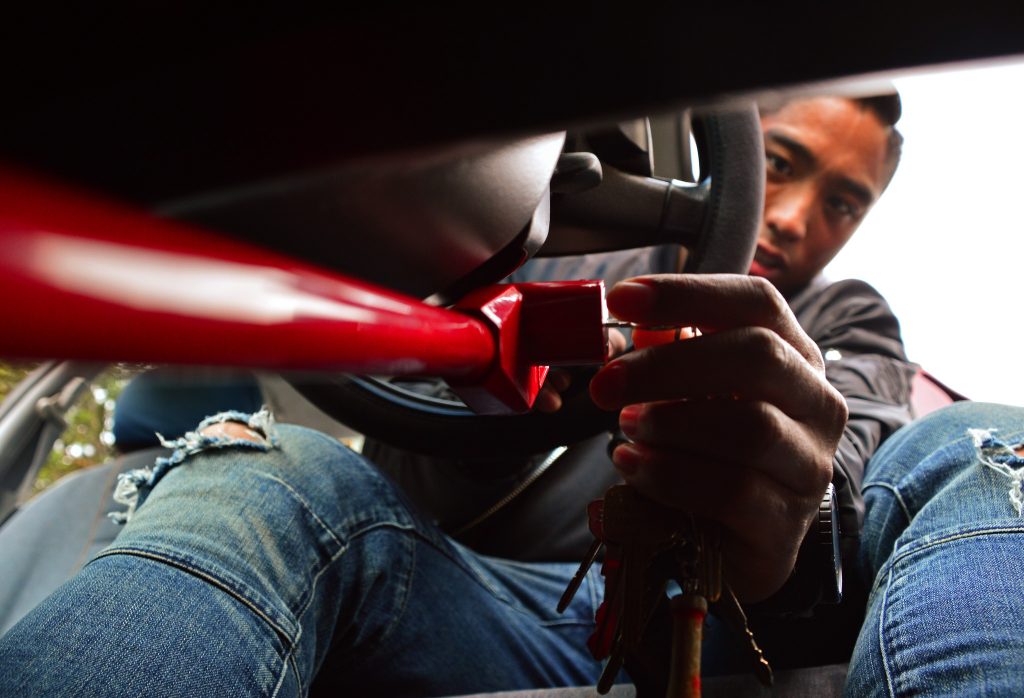Marika Mizianty, a sophomore cinema major at SF State, said her nightmare began last week when she discovered that her green Honda CR-V was missing from her parking spot on Holloway Avenue.
“My car’s my baby, so it’s so rough,” Mizianty said. “I searched all Saturday, all through Parkmerced. I felt like I was losing my mind or something.”
Mizianty’s misfortune reflects the rise in San Francisco car thefts, which have increased 10 percent since 2014, according to data from the San Francisco Police Department.
More than 535 more automobiles have been reported stolen so far this year, according to the 2015 report. In response to the rise in car thefts throughout the Bay Area, the University Police Department has taken precautions to prevent them from occurring around campus, UPD Detective Srgt. Dave Rodriguez said.
Mizianty, who lives at University Park South said she had planned to grab some food Friday and asked her friends to meet her at her car while she ran into her room to grab her wallet. She received a phone call from one of her friends telling her that the car was not there. Mizianty said she and her friends spent the next day looking for the car up and down the streets near SF State’s campus.

Afraid the car had been towed for being parked on the street all week, Mizianty started calling towing companies. They informed her that her car was not there and that she had no citations, she said. Mizianty reported the car stolen, and she hasn’t heard from police since.
Teaching associate for the biology department Michael Cala had his car stolen twice. His white Honda Civic was initially stolen near AT&T Park a year and a half ago. It was stolen again last week outside his home in the Sunset District and found the next day in downtown San Francisco.
“You kind of have that initial heart drop where you just come out and you’re like, ‘there’s nothing there anymore,'” Cala said.
Crime and safety data collected around campus provide University police with a better idea of which areas to patrol more, according to Rodriguez, who said that marked vehicles, motorcycles and plain clothes police patrol in areas with the highest concentrations of crime.
Recovery rates range between 80 and 90 percent in San Francisco, according to SFPD Officer Albie Espazra, who said the main cause of car thefts are joy rides. Most cars are recovered throughout the city and are hardly ever sold to chop shops, Esparza said.
Stolen vehicles are typically recovered by people who often report abandoned cars parked in the same place for days, according to SFPD Sergeant Michael Andraychak. The Department of Parking and Traffic also is a source for recovering stolen vehicles, he said. When an officer issues a parking citation, Andraychak said, the patrol car has a system that reads licenses plates and notifies them when a car is stolen.
Safety briefings are held with crime prevention specialists, detectives and sometimes uniformed police officers at the beginning of each semester for students to learn about security measures to help prevent crimes, according to Rodriguez.
“These crimes do not take very long to accomplish and it can be challenging to catch people in the act,” Andraychak said. “We attempt to educate the public and our victims as to how they can reduce the chances of becoming a victim.”
The crime prevention specialists also organize weekly tabling on campus to give assistance and counseling regarding safety.

“In an ongoing effort to minimize vehicle burglaries, the University Police routinely give security talks to incoming students, at the beginning of each semester and advise them of the risks of leaving property in vehicles,” Rodriguez said. “We encourage students to remove any items of value from their vehicles as well as any items that are in plain view of passersby.”





